We have to double-check your registration and make sure this is not an automated entry in our system. Please complete the test below...
Two large polychromed wood 'Crucifixion' retable fragments, probably Brabant, 15/16th C.
H.: 84 cm
Provenance: An important private collection of medieval works of art.
While the present works show a number of resemblances to confirmed works from Brussels workshops, it can not be excluded that they may have been made in a more regional workshop. Such regions as Hainaut and Tournai in Belgium, or even the French centres in Picardy (Picardie), Normandy (Normandie) and Brittany (Bretagne), were working under the influence of Brussels.
From the composition, it is clear that the works were intended to be looked at from below.
The group on the right depicts the fainting Virgin Mary (or Swoon of the Virgin). She's situated in the lower middle section, being supported by John the apostle and Mary Magdalene. From the horsemen in the upper part, only the soldier in the upper left corner can be identified as Longinus, the name given to the unnamed Roman soldier who pierced Jesus' side with a lance and who in medieval and some modern Christian traditions is described as a convert to Christianity. This fragment would have been placed in the left half of the retable.
A somewhat related group attributed to Brussels can be found in the Palais des Beaux Arts in Lille. (link)
The group on the left depicts four horsemen from the cavalry, looking up at Christ on the cross. The soldier on the white horse is pointing two fingers upwards, towards the central scene on the retable. On the right handside, from the viewer's perspective, behind the white horse, we see a kneeling and praying figure.
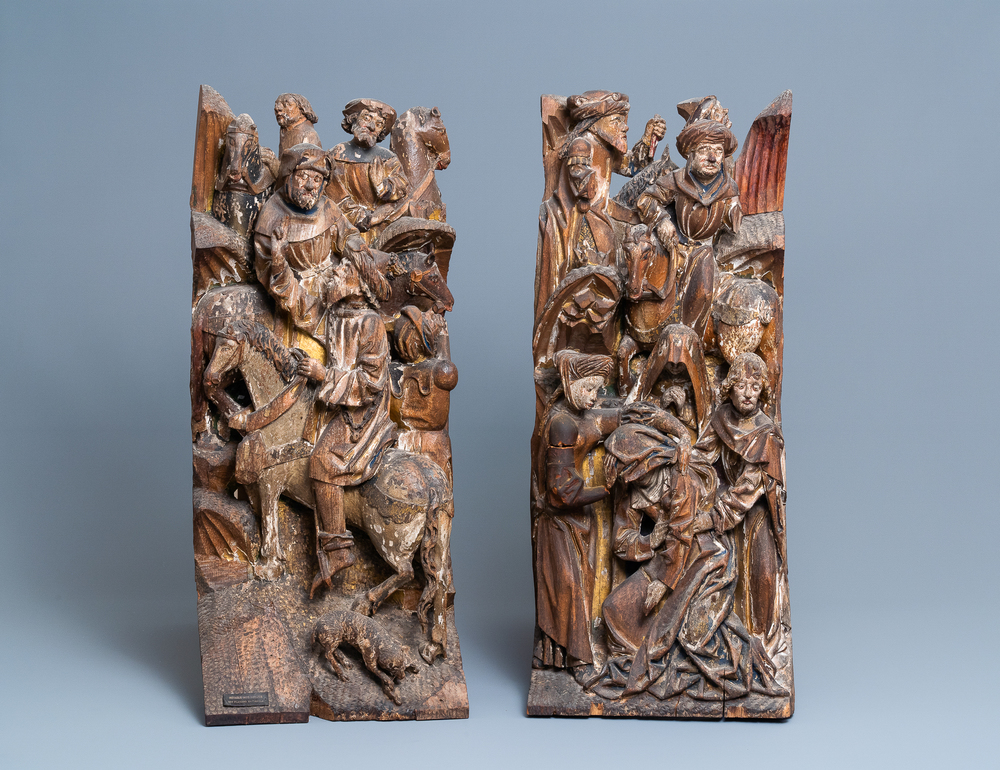
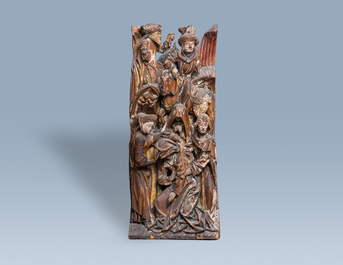
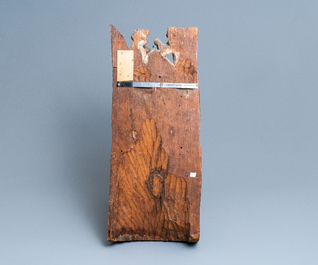
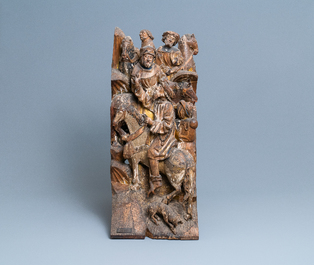
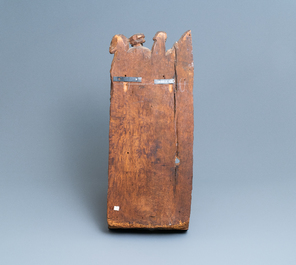
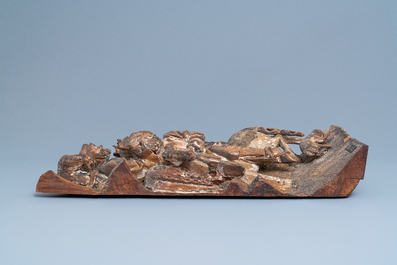
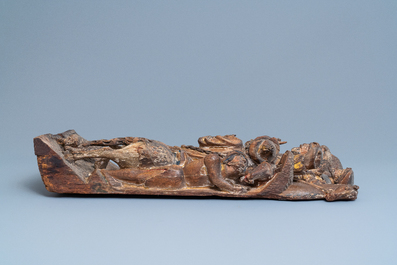
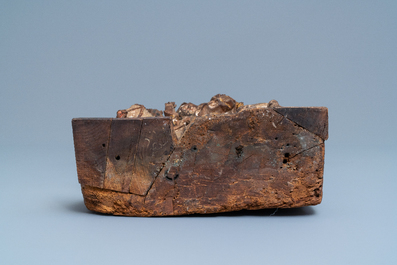
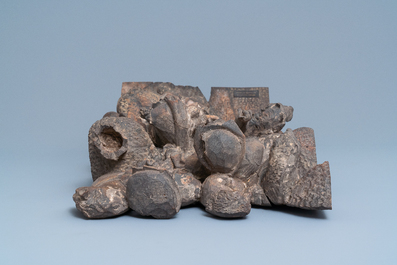
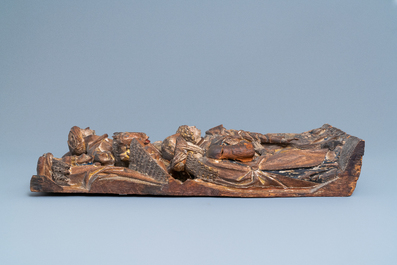
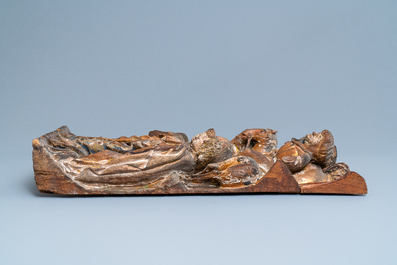
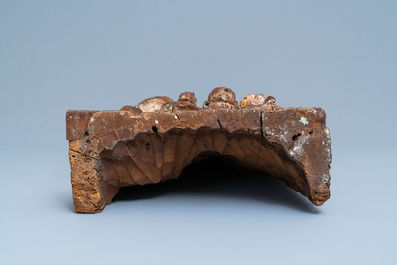
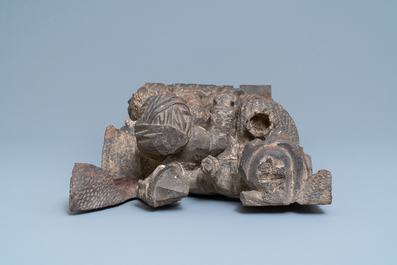
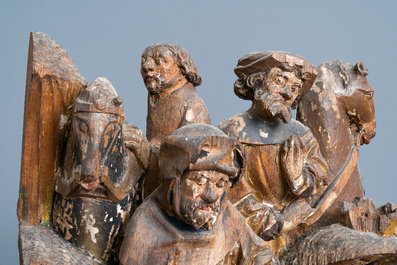
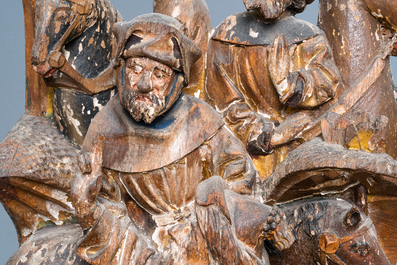
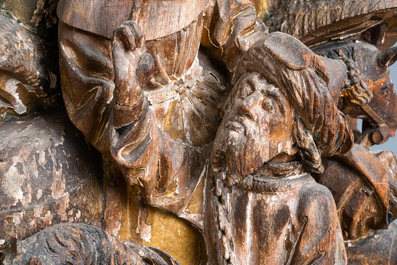
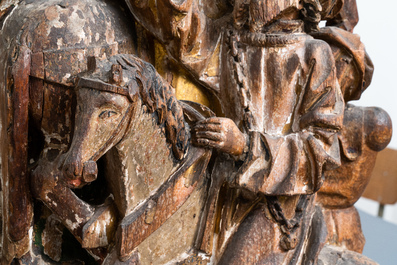
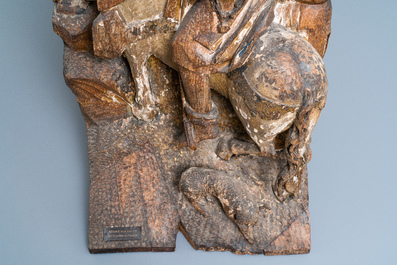
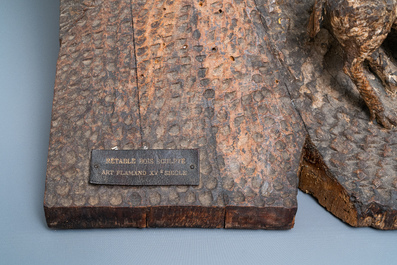
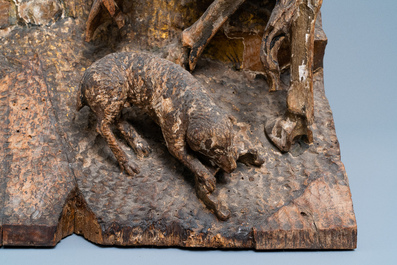
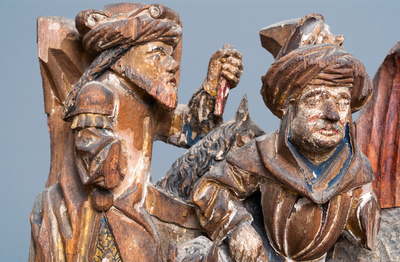
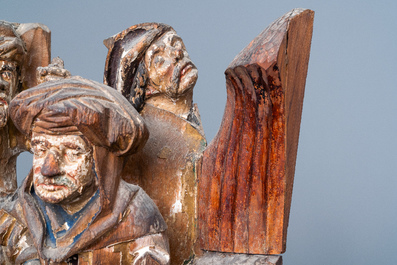
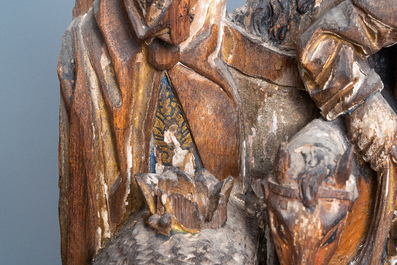
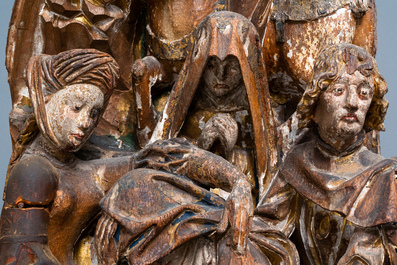
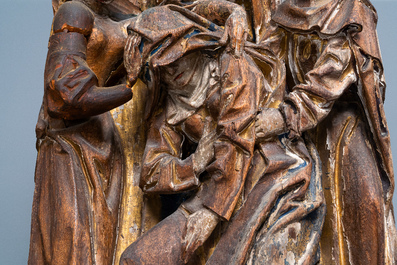
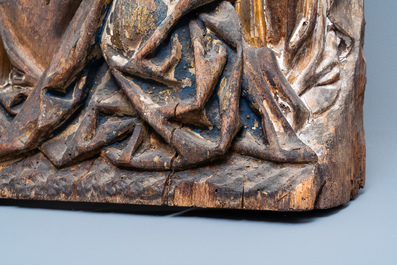
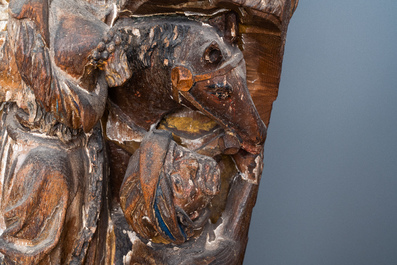
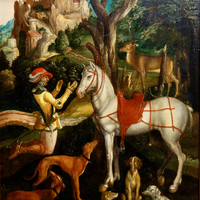

.jpeg)